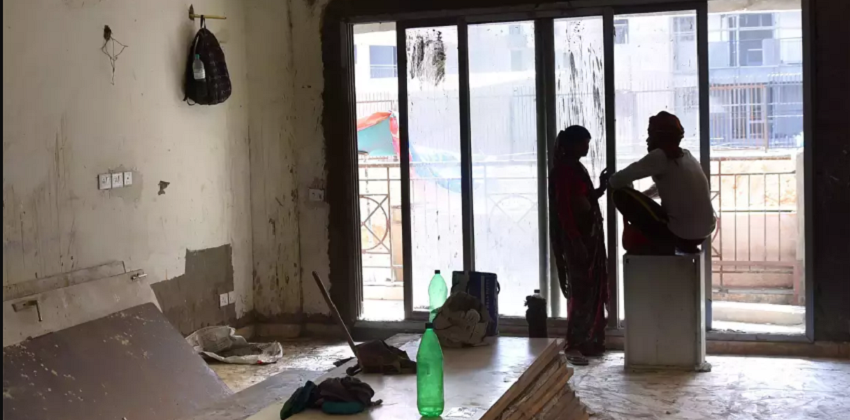
Every home buyer thinks there are some truths about the process that cannot be questioned because they are believed by so many people. Sometimes these nuggets of wisdom could actually be myths people do little to question and verify and follow blindly. Below is a selection of six of such widely prevalent myths about buying residential property. These myths could be true for certain buyers depending on their unique circumstances and preferences but when taken as eternal truths they could be misleading. Exercise due caution and ask questions when you get to hear these from anyone.
Myth 1: RERA covers all projects
RERA, or the Real Estate (Regulation and Development) Act, 2016, has come as a big relief for home buyers. But many home buyers believe every project is covered by RERA and thus safe. That’s not true. RERA covers projects with 500 square meter or more area or eight or more units. For a project to be RERA compliant, the builder needs to register it with the authority. So before taking the plunge, you need to ensure that the project is registered with your state’s regulator. RERA makes it mandatory for all commercial and residential real estate projects where the land is more than 500 square metre or eight apartments to register with the regulator before the launch.
Myth 2: Under-construction homes are safer now than before RERA
Before RERA kicked in, a large number of builders defaulted on their projects, especially in Delhi-NCR, and left many home buyers in the lurch. That’s why buyers preferred ready-to-move-in homes. However, after RERA, builders focus on completing the existing projects instead of starting new ones and leaving the existing ones unfinished. So, does this mean under-construction projects are now safe to consider?
“Ready-to-move-in properties are doubtlessly the least risky. They offer instant gratification, the what-you-see-is-what-you-get assurance, and also do not attract GST. Under-construction properties can be considered as long as buyers focus on only well-capitalized developers who are diversified across other property typologies and even businesses. Completion track-record is the key concept,” Thakur adds.
Myth 3: Subvention schemes help cut cost
Subvention plans or no-EMI-till-possession plans never fail to attract home buyers. Under such schemes, a developer asks home buyers to pay around 10-30 per cent of the amount upfront. The balance is paid by a bank to the developer as a loan under a three-way agreement between the developer, the buyer and the bank. While the project is under construction, the developer pays the interest on the loan to the bank. The bank disburses money to the builder as construction progresses. The buyer’s EMIs begin only after he gets possession. This may sound like a great deal but does it really cut cost?
“From vanilla pricing strategies, developers have evolved smart and catchy schemes that attract buyers. All possession-linked plans tend to tie the investors to the project for a longer period. Also, in such schemes, the level of price discounts available is lower than regular construction-linked or down-payment plans. On an overall basis, the buyer is still paying the entire mount of his EMI as per his loan amount as the principal amount does not reduce till the actual EMIs begin. Pre EMIs are just payments of interest on the disbursed amount, which the developer pays on behalf of the buyer,” says Rohan Sharma, Head of Research, Cushman & Wakefield.
“Subvention plans do not effectively cause a direct reduction in prices. In fact, the overall ticket size may end up being higher. These plans are advantageous to those who have to pay rent as well as EMIs till the apartment is ready. There is only a time value of money advantage, where one can pay a large amount only upon possession of the apartment. This is largely available on under-construction projects just to bump up sales. However, nothing beats straight-up price discounts on the ticket size plus additional waivers to bring about a price reduction for home buyers,” Sharma adds. Besides if the EMI is delayed by the builder, your credit score too takes a hit.
Myth 4: Metros are the best places to invest in homes
Having a home in a metro or a Tier 1 city has its own advantages, substantial rental income being one. Rental income in metros will be higher even if capital appreciation of the property is lower, but one needs to decide if this is a worthwhile trade-off. However, on the flipside, experts believe that emerging areas, Tier 2 and Tier 3 towns, are more attractive options.
“Emerging areas and Tier 2 and Tier 3 cities tend to offer the most attractive price points as well as appreciation potential. Established areas and metro cities are the costliest and have much lower appreciation potential. The keyword in the term ‘growth corridor’ is ‘growth’. If there is no scope for an area or city to grow further (in terms of civic and social infrastructure, economic drivers and overall real estate expansion) investments into it will not ‘take off’ as may be hoped for,” says Thakur.
Corroborating his views, Dinesh Jain, MD, Exotica Housing, says, “Metros are always a good option due to developed amenities and strong social infrastructure. But buying a property in metros will bring huge burden on the pocket where one actually pays price of locality not property. That is why people choose emerging markets or micro-markets to invest, wait and enjoy property as a long-term investment. There is a huge cost difference between property in metro and non-metro cities. Skyrocketing prices of property in gurgaon metro and Tier 1 cities are a reason behind fast-growing micro markets in close vicinity of metros.”
Myth 5: Renting is better than buying
There is no straightforward formula to arrive at an answer for this, since it depends on individual preference and time-frame. If you’ve planned to live in one city for the rest of your life, buying a home could be a more suitable option for you. It would be better to pay EMI than monthly rent.
“Many of today’s millennials prefer the ‘Uber’ way of life – buy nothing, rent everything and either save or invest money in mutual funds of stocks. This mindset tends to change as one crosses age 40, when a yearning to settle down invariably creeps in. If one has not bought a property by then, things can get difficult. One’s salary increments may or may not have kept pace with inflation, but property prices would have appreciated. Buying a home can be challenging if the desire to do so comes too late in life, unless one has done extremely well on both the professional and investment fronts,” says Thakur.
“In broad terms, investment in real estate is investment in a performing asset. The asset either provides a roof over one’s family or can generate rental income and with patience, given the current market scenario, even long-term capital appreciation. Rental outgo is a dead investment in the sense that it pays for an immediate need but generates no returns, other than a small HRA tax benefit. Another factor is age,” Thakur explains.
Myth 6: Real estate agents are not helpful
Just to save on brokerage, many home buyers do not feel the need to hire a real estate agent. But professional advice comes handy when making such a big-ticket investment.
Services of a real estate agent are always helpful. Real estate agents possess strong knowledge of their area and properties. They also offer you multiple options as per your need. A builder will not give multiple options and will try to convince you into buying his property. Agents also help negotiate the price of the property, so the brokerage you pay is worth it. Apart from helping you find the right property, agents also offer post-sales services such as site visit and documents support that a builder may not offer.
Source : Economic Times

